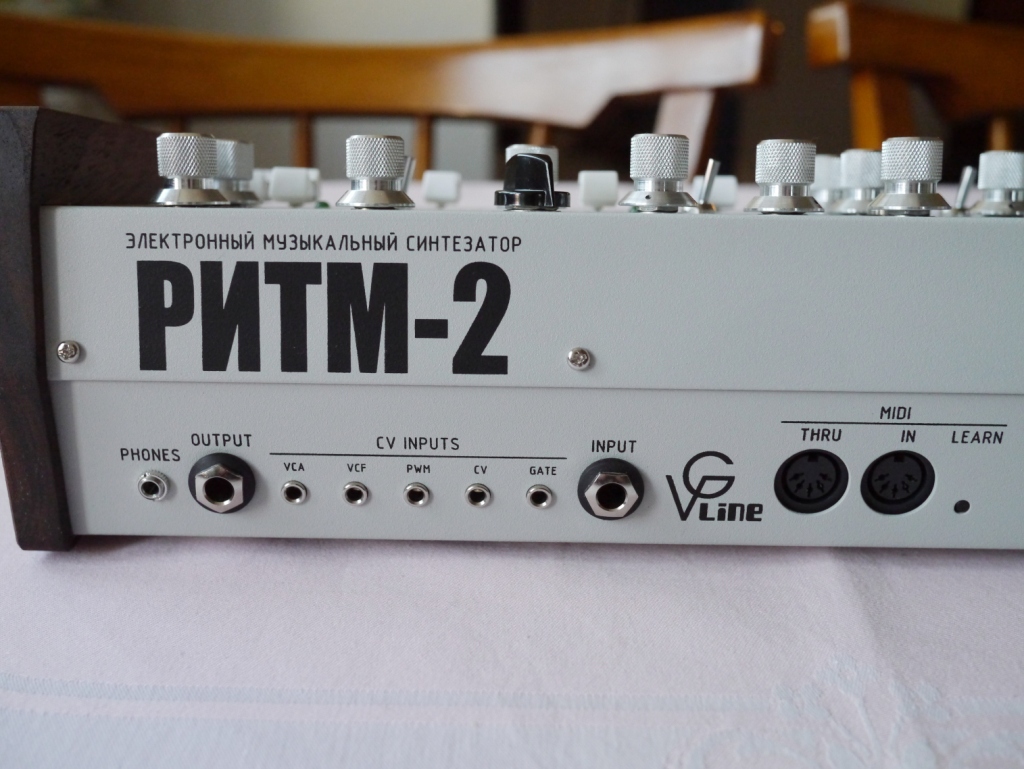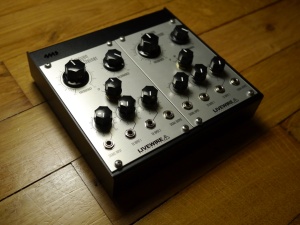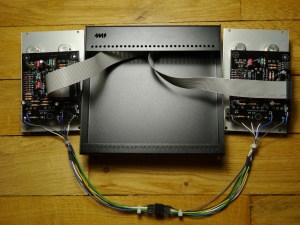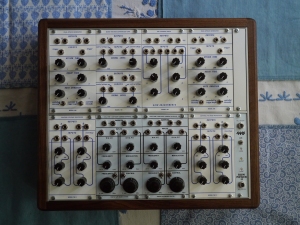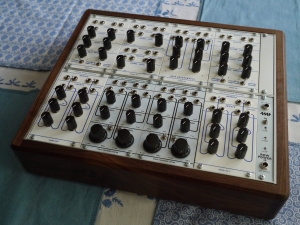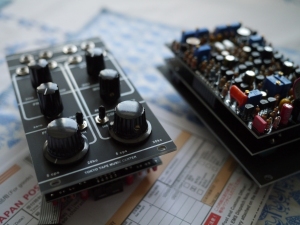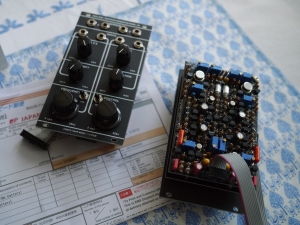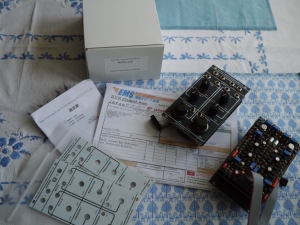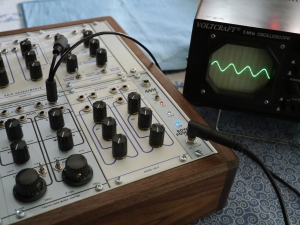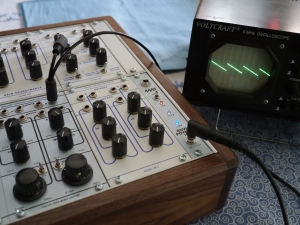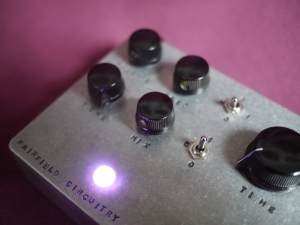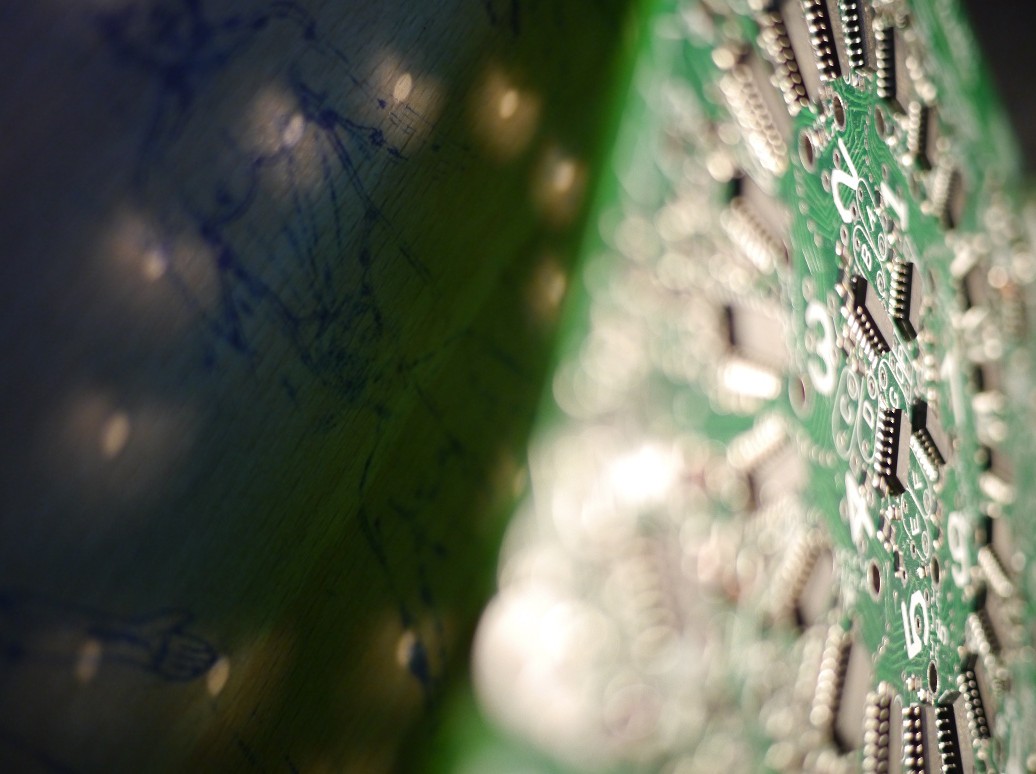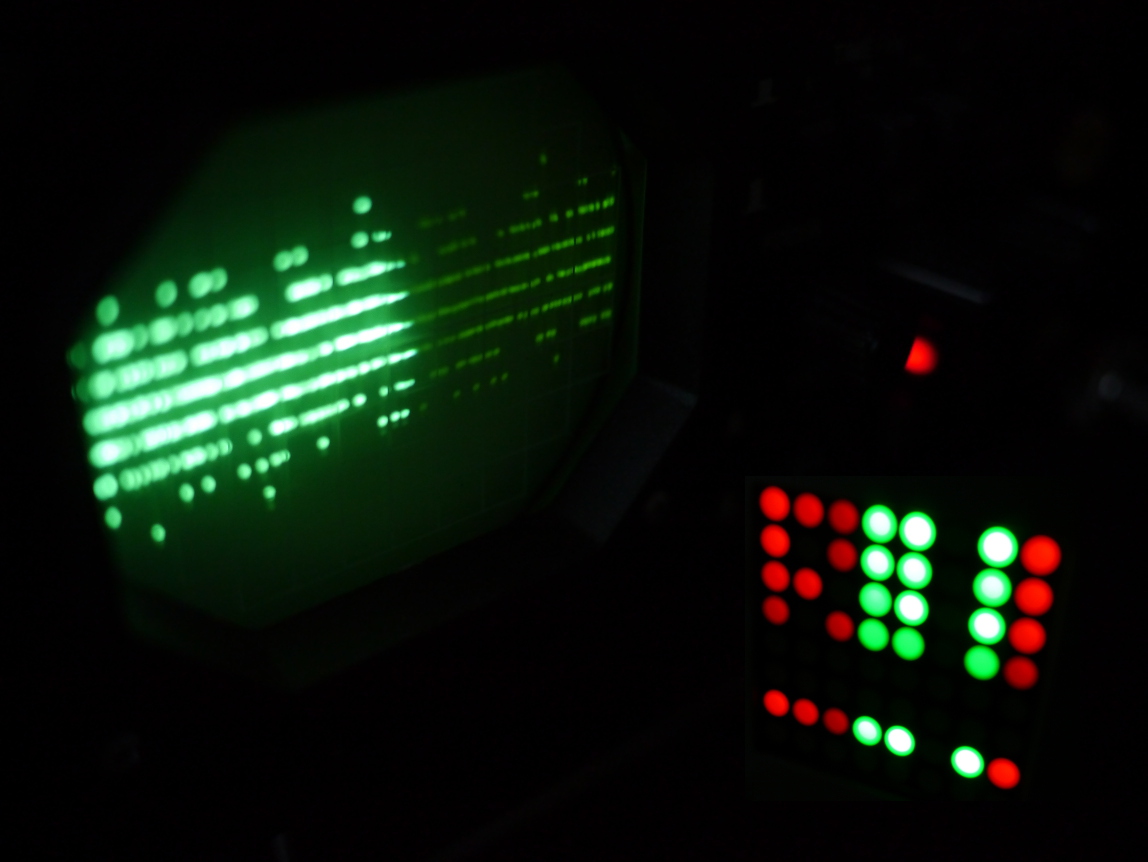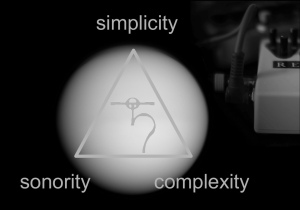Nowadays the mass production allows us to buy a variety of analogue synthesizer for little money. These instruments are typically soldered by machines and mounted in plastic enclosures with (too often) a flimsy or toyish feel. In contrast the RITM-2 by the Russian Company VG-Line is high quality and hand build with a lots of love. It is basically a desktop recreation of the vintage version of same name, which was designed by Viktor Nikulin and produced Kirovsky musical instruments from 1984. The RITM-2 is a simple subtractive monophonic synthesizer with a single oscillator. I want to address the question why it might be worth to invest some extra coin for this sweet boutique synthesizer.

Specifications
The basic feature of the RITM are shared with the puristic original design:
- Single VCO core with Octave switch and PWM
- Mixer section for triangle/saw, square/PWM and noise generator
- 24dB low pass filter based on LM394 with tracking selector (1 or 1/2)
- LFO with triangle, square and stepped random
- Two ADSR for filter and VCA, the VCA ADSR is loopable
- Simple modulation selector for VCO and VCF
The VG-Line RITM-2 is a slightly expanded version of the original design:
- Build in Midi Interface
- Switchable Midi velocity, which affects the Sustain in the VCA
- Switchable synchronization of the LFO to Midi Clock
- External audio input, which is routed to the mixer section
- CV/Gate Interface with most popular 1V/Oct characteristic
- Additional CV Inputs for VCA, VCF, PWM
The changes are well thought and VG-Line totally preserves the look of the original instrument. Because the original design requires switch trigger and a very exotic -1.18 V/Oct scaling, the build in CV/Gate is a real bargain and game changer. The extended features are very comfortable to use and make the integration into modern studio environment easy and fast. The tracking and the tuning are also excellent.
Build quality
The synth is assembled in a sturdy metal enclosure, which is finished with a beautiful powder coating. The pots, sliders and switches feel very smooth and durable. The front panel keeps the character of the original layout. The desktop unit features some additional LEDs for power (color changes cyclic), Midi and ADSR. Especially, the ADSR LEDs give some valuable feedback of the envelope timing. There is also a TRS 3.5mm (1/8in) phones output with a separate volume control on the front panel, which is very handy for pre-listening in a live situation. Behind the side panels some trim-pots can be reached easily and also offers the view on the circuit board.
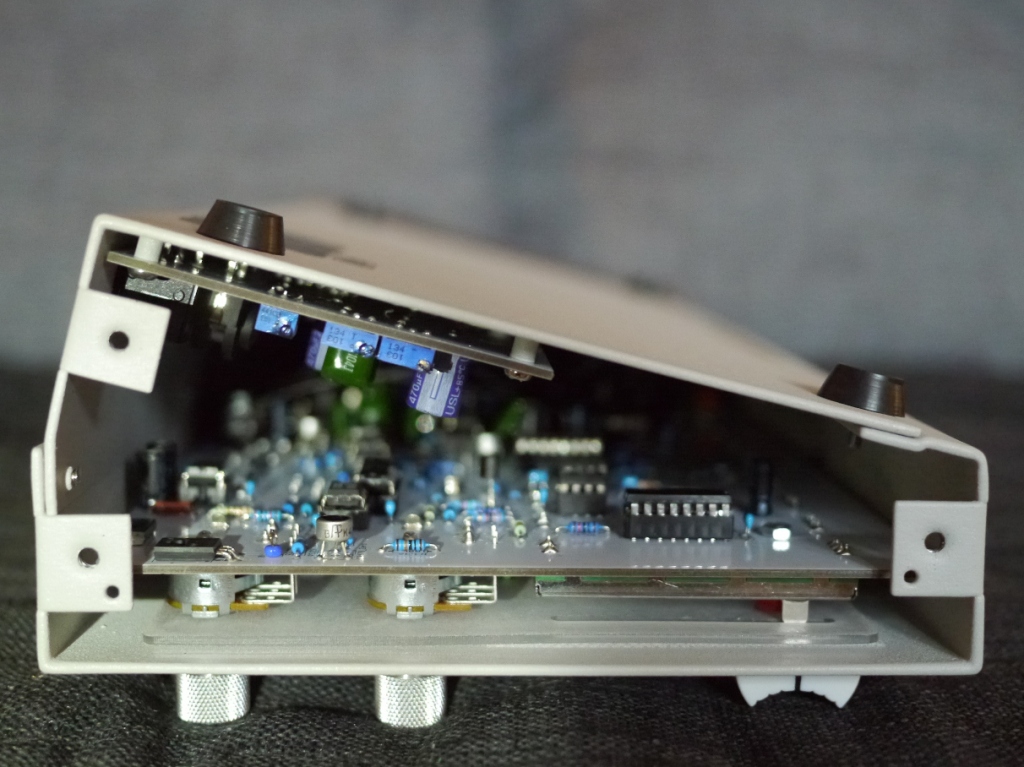
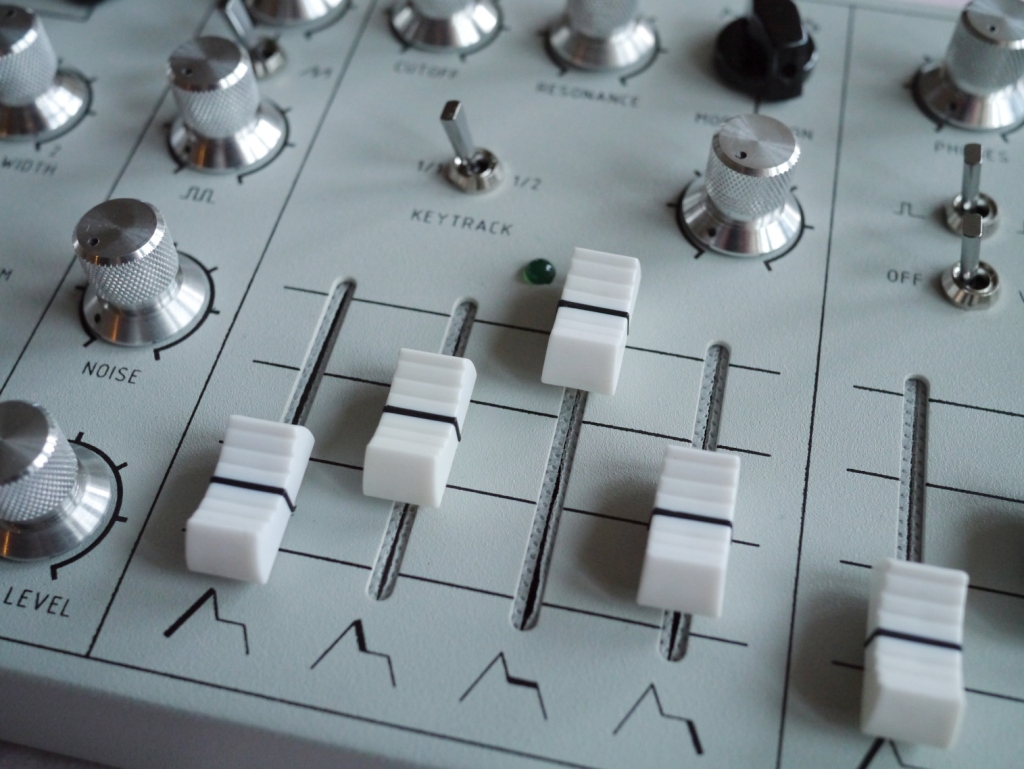
Sound capabilities
The oscillator shines with a very nice organic character with subtle instabilities, which also offers a lot of punch for low frequencies. The low pass filter oscillates at high resonance levels. The frequency range of the cutoff is huge and covers the full spectrum. The filter is very versatile and interacts in a very nice way with the oscillator. At moderate resonance the filter locks to overtones, which leads to a variety of subtle timbres. The noise generator has a more closed sound and differs (probably – I didn’t measure it) from a white noise spectrum. The noise level is also significantly lower than the oscillator level, which is an adaption from the original RITM-2. The overall sound quality is really superb and always very musically.
The routing possibilities are quite limited. The modulation sources are selected with rotary switches for the VCO and VCF each, i.e. each destination can be modulated by just a single source. The LFO speed ranges to lower audio frequencies, which makes some mild FM synthesis possible. The loopable ADSR of the VCA can be used for rhythmic syncopation or some dedicated AM with vocal sound. The switchable octave range underlines the performance abilities because there is no need to tune the VCO, if one wants to transpose the octave.
All in all, I really appreciate this puristic approach with some twists because tweaking a variety of sounds is very fast, productive and absolute fun. The synth is still much more versatile as one could expect from the puristic feature set and just in case: one is capable to extend the synthesis or modulations with the help of the PWM, VCF and VCA Input. The RITM-2 covers standard duties such as analog lead sounds, basslines or acid-like chirps (more fluid than rubber) with ease. Unfortunately, I am not able to make a direct comparison to a vintage RITM-2, but in my feelings VG-Lines put a lot of efforts to build a good recreation of the original sound. However, it brings an original aesthetics and shines with a dark and very lovely fragile quality, which reminds often of Soviet Sci-Fi movies.
Sound Examples
Either reverb (Catalinbread’s Talisman) or delay (Fairfield Circuitry’s Meet Maude) was applied. The recording is done in glorious mono. Some slight noises and overdrive could be a result of an incorrect leveling (I am sorry for that).
My conclusion
I didn’t expect it before, but I fell in love with this simple but amazing synthesizer (and this does not happen that often). It sounds a bit contradictory, the combination of sound and build quality as well as the puristic features are probably just the reason for that – for my taste even the LFO Sync option could had been dropped.
The overall character is very appealing and the given additional feature are chosen very well. Although VG-Lines released the RITM-2 already for a couple of years, public information about this project is still quite rare. The high price tag can be justified by the rock solid build and superb sound quality. One has to keep in mind that this a hand build niche product. In my opinion it deserves much more attention and love from the synthesizer community. At least my heart was won ❤ ❤ ❤
References
Many thanks to Max from VG-Line for some additional information!
Website of VG-Line RITM-2
http://www.ritm2.e-tera.ru/en/
Soviet synth database
http://www.ruskeys.net/eng/base/ritm2.php
CV/Gate Mod on the original RITM-2
http://www.modularsynth.ru/en/2013/06/17/ritm-2_cv_gate/
